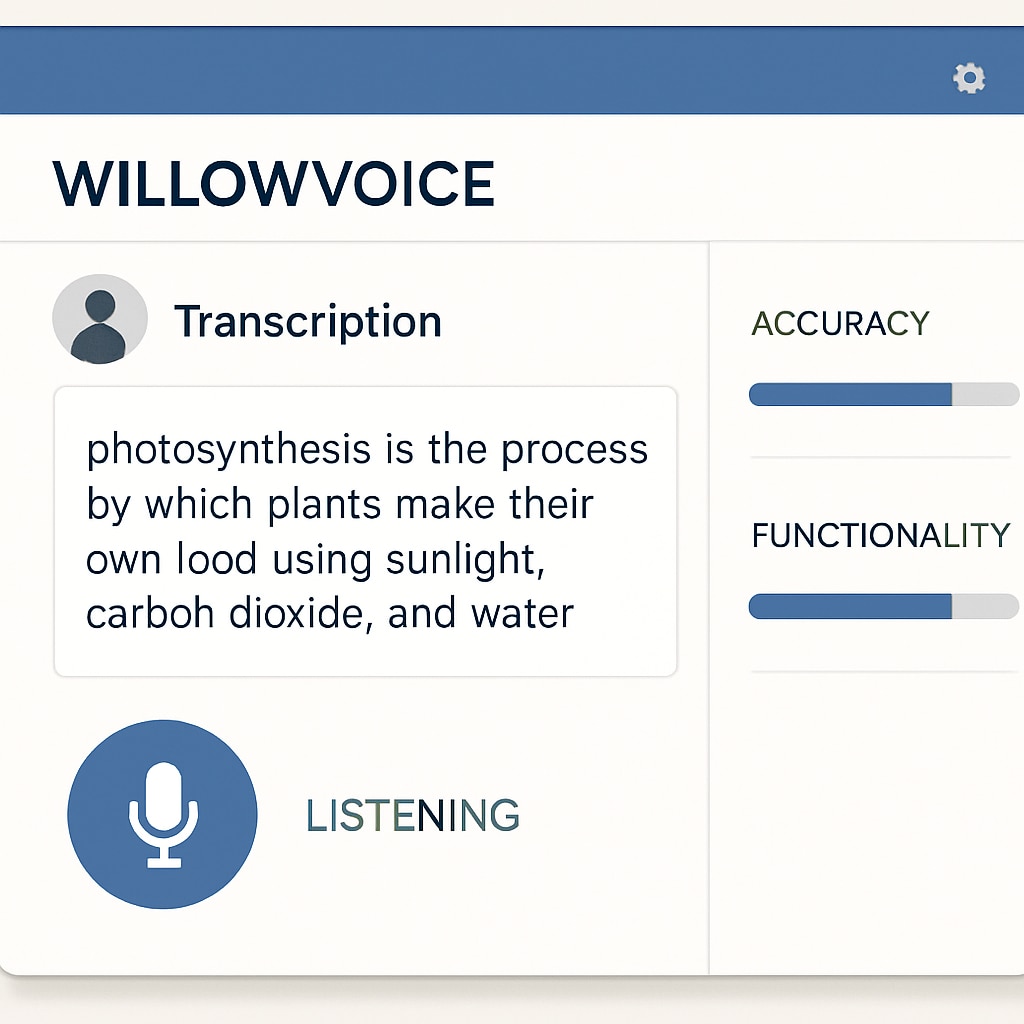For K12 educators, the workload often extends beyond teaching, spilling over into hours of administrative tasks. Speech-to-text technology, such as WillowVoice, is emerging as a powerful solution to streamline teacher workflows and reduce the administrative burden. By accurately recognizing academic terminology and creating instant documentation, tools like WillowVoice enable teachers to focus on what truly matters—delivering high-quality education and providing meaningful teaching feedback.
The Administrative Challenge in K12 Education
Teachers are not just instructors; they also act as planners, evaluators, and record keepers. This multifaceted role demands a significant amount of time dedicated to non-teaching activities, such as grading, lesson planning, and drafting reports. According to a report by Education Week, the average teacher spends hours each week on administrative tasks, often at the expense of their teaching quality or personal time. Speech-to-text technology offers a way to address this imbalance by simplifying documentation and communication processes.

How WillowVoice Redefines Teacher Workflows
WillowVoice, a leading speech-to-text tool, exemplifies the potential of this technology in education. Designed with the unique needs of educators in mind, WillowVoice provides several features that make it an invaluable asset in classrooms:
- Academic Vocabulary Recognition: Unlike generic speech-to-text tools, WillowVoice is optimized to recognize subject-specific terminology, ensuring accuracy in fields such as STEM, humanities, and arts.
- Real-Time Transcription: Teachers can record and transcribe lectures, discussions, and meeting notes instantly, saving time on manual documentation.
- Integration with Learning Management Systems (LMS): The tool can seamlessly export transcriptions into commonly used LMS platforms, reducing redundant data entry.
For example, a science teacher using WillowVoice can dictate lab instructions or summarize experiment results, which are then transcribed and shared with students in a matter of minutes. This not only lightens the teacher’s administrative load but also ensures that students receive timely, detailed feedback.

Benefits for Teaching and Learning
Speech-to-text technology does more than just simplify workflows; it directly impacts the quality of teaching and learning. Here’s how:
- Enhanced Feedback: Teachers can provide more detailed feedback to students, as dictation allows for faster and more comprehensive comments compared to typing.
- Increased Accessibility: Transcriptions can be shared with students who have special needs, such as hearing impairments or language barriers, making lessons more inclusive.
- Teacher Well-being: By reducing the time spent on repetitive tasks, teachers experience less burnout and can dedicate more energy to creative and engaging teaching methods.
As a result, both teachers and students benefit from a more dynamic and effective learning environment.
Future Implications of Speech-to-Text in Education
The adoption of speech-to-text tools like WillowVoice is just the beginning. As artificial intelligence (AI) continues to evolve, the potential applications in education are vast. For instance, predictive analytics could be integrated into speech-to-text systems to suggest improvements in lesson delivery or highlight areas where students may need additional support. Additionally, voice technology could play a role in real-time assessments, where student responses are transcribed, analyzed, and evaluated instantaneously.
However, implementing these technologies requires thoughtful planning and investment. Schools must ensure that teachers receive proper training to use tools like WillowVoice effectively and that privacy concerns are addressed, particularly when dealing with sensitive student information. As noted by Britannica, the ethical use of AI in education is a critical area of focus as these technologies become more integrated into classrooms.
In conclusion, speech-to-text technology has the potential to revolutionize K12 education by alleviating administrative burdens, enhancing teaching feedback, and improving overall workflows. Tools like WillowVoice demonstrate how technology can empower educators to spend less time on paperwork and more time inspiring the next generation of learners.
Readability guidance: This article employs short paragraphs, lists, and strategic use of transitions like “for example” and “as a result” to ensure clarity. Passive voice is minimized, and technical terms are explained where necessary.


